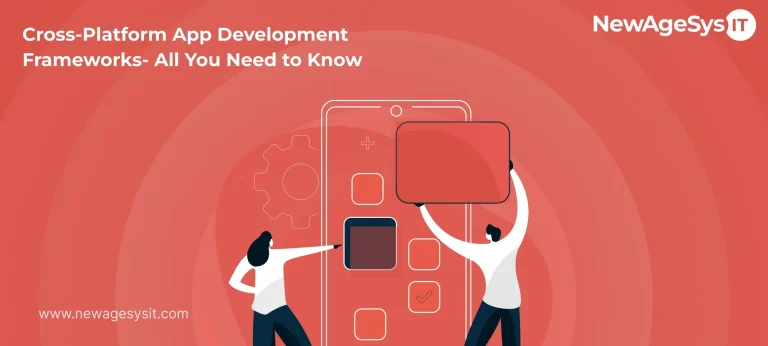Are you trying to decide how to make your mobile app? Creating a mobile app starts with one big decision: which platform should you use? Should you create one codebase for cross-platform development targeting Android and iOS operating systems? Or should you consider developing platform-specific apps, where each platform has its codebase? This article explores both options, comparing Flutter and native development to help you make an informed choice in 2024.
What is Flutter?
Flutter is an open-source framework developed by Google. It makes it possible to build mobile, web, and desktop apps using a single codebase. In recent years, this framework has become very popular due to its flexibility and efficiency. Flutter uses Dart, which was also built by Google, making it easy for those who understand programming languages such as Java or JavaScript.
Advantages
Multiplatform Support: With Flutter, developers can create Android, iOS, web, and desktop applications using the same base code, saving time and resources. Maintaining a single shared codebase across all platforms streamlines updates and bug fixes.
Hot Reload: The feature allows immediate viewing of changes within the codes without restarting the entire application, speeding up the development process and making it effective. Especially during the UI/UX design phase, it enables rapid prototyping.
Economical: Using one codebase that works on multiple platforms reduces development costs significantly. For startups or small businesses aiming for maximum ROI, this can be a game-changer in terms of cost-effectiveness.
Community Growth: Many Flutter developer-friendly communities exist, contributing extensively through resourceful plugins, and enriching the development experience with the toolset.
Disadvantages of Flutter
Limited Platform-Specific Features: Some features may work less effectively compared to native development, especially those that rely heavily on deep hardware integration. Such apps may be critically dependent on native device functionalities.
Learning Curve: Dart is a new language, and it takes time for developers to familiarize themselves with it. The initial learning phase can slow down project timelines, although it is not complicated for those who have worked with similar languages before.
What is Native Development?
Building mobile applications using platform-specific languages and tools is called native development. It allows optimization for performance at the highest level on each platform separately. For Android, this means using Java or Kotlin with Android Studio; for iOS, it means using Swift or Objective-C with Xcode.
Advantages of Native Development
Seamless Hardware Integration: No additional layers are needed, as direct access to various hardware features is allowed. Deeply integrated device hardware, such as augmented reality or high-performance games, greatly benefits from this.
Extensive Library Support: Many libraries and plugins that save development time are available, often well-tested and high-performance optimized.
Optimization for Platform Specificity: This results in optimized performance per platform. Natively-built applications utilize every aspect of the phone thereby leading to superior output.
Native Look and Feel: By utilizing specific user interface components of a given platform, the best user experience can be created. It ensures compliance as well as expectations of users towards design guidelines within each operating system as an application functions in conjunction with these platforms.
Disadvantages of Native Development
Higher Development Cost: If a project requires complexity, developing an Android app will require different teams from developing an iOS version, thus increasing costs dramatically.
Longer Development Time: Maintaining separate codebases can result in longer timelines, a major drawback for projects with tight deadlines or those that require frequent updates.
Flutter vs Native: A Deep Analysis
Development Environment
Flutter: Unites Android and iOS code bases and minimizes the time spent in development. This united approach streamlines project management, simplifies operations, and ensures that many codebases are not managed simultaneously.
Native: Different codebases and development environments for Android (Java/Kotlin, Android Studio) and iOS (Swift/Objective-C, Xcode). It can result in more targeted applications but requires managing multiple development streams.
User Interface
Flutter: Provides a wide range of widgets for a uniform UI across all platforms, but achieving pixel-perfect designs can be challenging. Flutter’s widgets are highly customizable, allowing developers to produce unique interfaces with appealing visual designs.
Native: Uses platform-specific UI controls, ensuring the best visual fit and adherence to design guidelines. Native controls offer a much smoother and intuitive user experience which closely matches each platform’s design philosophy.
Performance
Flutter: Compiles into native ARM code, which offers good performance with slight overhead from the additional framework layer. This balances performance and flexibility in cross-platform development.
Native: Native apps are optimized specifically for each platform, giving the best possible performance. Native apps fully utilize the device’s hardware capabilities, resulting in faster and more responsive applications.
Community
Flutter: The community is growing rapidly with a vibrant community contributing libraries and plugins. This active community support means developers can find solutions to common problems quickly as well as share knowledge easily.
Native: A well-established platform with extensive resources and support. The native development communities for both Android and iOS have accumulated years of knowledge and resources.
Cost Considerations
Flutter: Costs are lower due to a single codebase. For small-budget projects or those needing quick market entry, Flutter is advisable.
Native: The costs will be higher because you will need separate teams doing separate development. While this is a barrier for some people, most find it worth considering the improved app performance as well as user satisfaction.
For an in-depth look at all the factors that influence mobile app pricing, check out our dedicated article on mobile app development costs
Use Cases of Flutter and Native
Flutter
Cross-Platform Development: Ideal for targeting both Android and iOS using a single codebase. Suitable for startups or firms aiming for quick market penetration.
Faster Development Cycle: Perfect for projects with tight deadlines and frequent updates. The hot reload feature and unified codebase make it productive, especially for developing applications.
Resource Efficiency: Reduces the need for multiple development teams, cutting down on costs. This efficiency helps businesses allocate resources more effectively.
Consistent UI Experience: Promotes uniformity across all platforms, ensuring a consistent look and feel. Flutter’s widgets allow for a cohesive design language that leads to a consistent user experience.
Native
Performance Optimization: Ideal for large-scale applications requiring high performance. Ensures that native apps run smoothly, even under heavy loads.
Platform-Specific Features: Necessary for applications with deep hardware integration. Native apps take advantage of each device’s unique features, enhancing the user experience.
Design Guidelines: Essential for apps needing strict adherence to design standards. Native development improves usability and user satisfaction by ensuring compliance with platform-specific design principles.
Experienced Native Developers: Best if you have experienced native developers who know languages like Kotlin/Java for Android or Swift/Objective-C for iOS. These developers can maximize the platform’s potential, delivering high-quality applications.
Conclusion
Choosing between Flutter and Native Development can significantly impact the success of your mobile app project. While Flutter offers a cost-effective, efficient, and versatile solution for cross-platform development, native development provides unparalleled performance and deep hardware integration for platform-specific applications. At NewAgeSysIT, our experience and expertise in both flutter and native development allow us to adopt customized solutions that suit your particular project. Whether you are a cash-strapped start-up aiming at making a quick market entry or an enterprise business looking for high-end optimal performance and user interaction, our team of experts can guide you through every step of the development process. There is nothing else like our knowledgeable team on mobile app development covering different spheres in this sector. Our expertise in both Flutter and native development ensures your application will be built to the highest standards, regardless of the platform you choose.
























